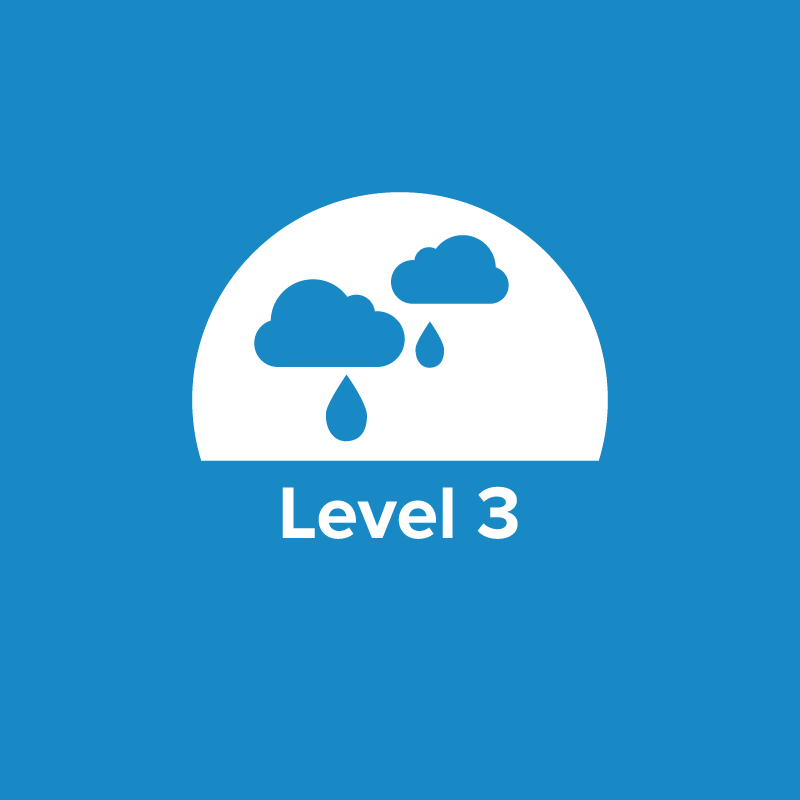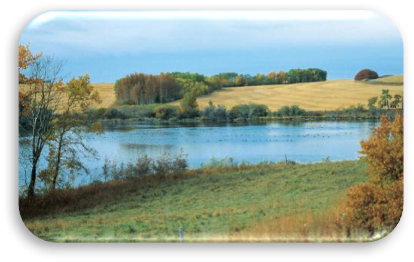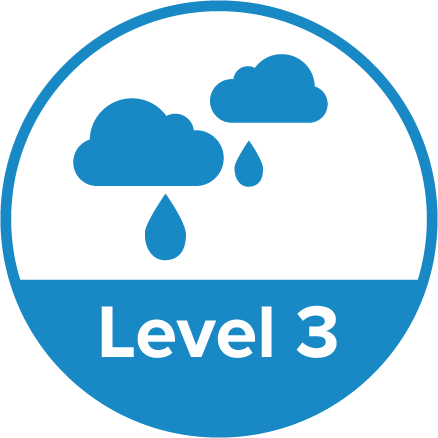Journey 2050 Lesson 3: Water (Grades 9-12)
Students will discuss the limited amount of fresh water on earth, identify how best management practices can reduce water consumption, discuss the need for water conservation and protection, and compare and contrast methods of irrigation for water conservation.

Background
Lesson Activities
Recommended Companion Resources
Credits
Author
Lindsey Verhaeghe, Andrea Gardner, Debra Spielmaker, and Sara Hunt | National Center for Agricultural Literacy (NCAL) and Nutrien
Acknowledgements
The Journey 2050 program was originally developed by Nutrien in collaboration with Calgary Stampede, Alberta Canola Producers Commission, Nutrients for Life Foundation, and Agriculture in the Classroom Canada. Authors and contributors were drawn from each of these organizations under the direction of Lindsey Verhaeghe (Nutrien) and Robyn Kurbel (Calgary Stampede.) The lessons were updated and revised in 2017 and 2022 with contributions from the original J2050 Steering Committee, the National Center for Agricultural Literacy, and the National Agriculture in the Classroom Organization.
Sources
- https://water.usgs.gov/edu/pdf/earthwherewater.pdf
- http://www.fao.org/news/story/en/item/130033/icode/
- https://www.weforum.org/agenda/2020/06/world-population-water-stress-2050-climate-change/
- http://www.fao.org/news/story/en/item/130033/icode/
- http://www.nationalgeographic.com/kidsnetwork/water/session_01.html
- https://www.thefashionlaw.com/how-many-gallons-of-water-does-it-take-to-make-a-single-pair-of-jeans/
- http://www.borgenmagazine.com/impact-drip-irrigation-crop-per-drop/
- http://www.fao.org/docrep/t1696e/t1696e09.htm
- https://water.usgs.gov/edu/earthwherewater.html
- https://www.usgs.gov/special-topics/water-science-school/science/freshwater-lakes-and-rivers-and-water-cycle
- http://www.miseagrant.umich.edu/flow/pdf/U2/FLOW-U2-L3-MICHU-08-402.pdf
- http://www.ers.usda.gov/topics/farm-practices-management/irrigation-water-use.aspx
Standards
Texas Content Area Standards
-
Principles of Agriculture, Food, and Natural Resources: 130.2.c.1
The student demonstrates professional standards/employability skills as required by business and industry. The student is expected to:
- Principles of Agriculture, Food, and Natural Resources: 130.2.c.1.B: apply competencies related to resources, information, interpersonal skills, problem solving, critical thinking, and systems of operation in agriculture, food, and natural resources.
-
Principles of Agriculture, Food, and Natural Resources: 130.2.c.4
The student explains the historical, current, and future significance of the agriculture, food, and natural resources industry. The student is expected to:
- Principles of Agriculture, Food, and Natural Resources: 130.2.c.4.B: analyze the scope of agriculture, food, and natural resources and its effect upon society.
- Principles of Agriculture, Food, and Natural Resources: 130.2.c.4.C: evaluate significant historical and current agriculture, food, and natural resources developments.
- Principles of Agriculture, Food, and Natural Resources: 130.2.c.4.F: compare and contrast issues impacting agriculture, food, and natural resources such as biotechnology, employment, safety, environment, and animal welfare issues.
- Principles, of Agriculture, Food, and Natural Resources: 130.2.c.4.D: identify potential future scenarios for agriculture, food, and natural resources systems, including global impacts.
-
Principles of Agriculture, Food, and Natural Resources: 130.2.c.6
The student demonstrates appropriate personal and communication skills. The student is expected to:
- Principles of Agriculture, Food, and Natural Resources: 130.2.c.6.A: demonstrate written and oral communication skills appropriate for formal and informal situations such as prepared and extemporaneous presentations.
- Principles of Agriculture, Food, and Natural Resources: 130.2.c.6.B: demonstrate effective listening skills appropriate for formal and informal situations.
-
Principles of Agriculture, Food, and Natural Resources: 130.2.c.15
The student explains the relationship between agriculture, food, and natural resources and the environment. The student is expected to:
- Principles of Agriculture, Food, and Natural Resources: 130.2.c.15.A: determine the effects of agriculture, food, and natural resources upon safety, health, and the environment.
- Principles of Agriculture, Food, and Natural Resources: 130.2.c.15.B: identify regulations relating to safety, health, and environmental systems in agriculture, food, and natural resources.
- Principles of Agriculture, Food, and Natural Resources: 130.2.c.15.C: identify and design methods to maintain and improve safety, health, and environmental systems in agriculture, food, and natural resources.
- Principles of Agriculture, Food, and Natural Resources: 130.2.c.15.D: research and analyze alternative energy sources that stem from or impact agriculture, food, and natural resources.
- Principles of Agriculture, Food, and Natural Resources: 130.2.c.15.E: evaluate energy and water conservation methods.
-
Economics with Emphasis on the Free Enterprise System and Its Benefits: 113.31.c.1
Economics. The student understands the concepts of scarcity and opportunity costs.
- Economics with Emphasis on the Free Enterprise System and Its Benefits: 1.A: The student is expected to explain why scarcity and choice are basic economic problems faced by every society.
-
Economics with Emphasis on the Free Enterprise System and Its Benefits: 113.31.c.23
Social studies skills. The student uses problem-solving and decision-making skills, working independently with others.
- Economics with Emphasis on the Free Enterprise System and Its Benefits: 23: The student is expected to use problem-solving and decision-making processes to identify a problem, gather information, list and consider options, consider advantages and disadvantages, choose and implement a solution, and evaluate the effectiveness of the solution.
-
World Geography Studies: 113.43.c.19
Science, technology, and society. The student understands the impact of technology and human modifications on the physical environment.
- World Geography Studies: 19.C: The student is expected to analyze the environmental, economic, and social impacts of advances in technology on agriculture and natural resources.
-
World Geography Studies: 113.43.c.12
Economics. The student understands the economic importance of, and issues related to, the location and management of resources.
- World Geography Studies: 12.A: The student is expected to analyze how the creation, distribution, and management of key natural resources affects the location and patterns of movement of products, money, and people.
- World Geography Studies: 12.B: The student is expected to evaluate the geographic and economic impact of policies related to the development, use, and scarcity of natural resources such as regulations of water.
-
English I: 110.36.c.1
Developing and sustaining foundational language skills: listening, speaking, discussion, and thinking--oral language. The student develops oral language through listening, speaking, and discussion.
- English I: 1.A: The student is expected to engage in meaningful and respectful discourse by listening actively, responding appropriately, and adjusting communication to audiences and purposes.
-
English II: 110.37.c.1
Developing and sustaining foundation language skills: listening, speaking, discussion, and thinking--oral language. The student develops oral language through listening, speaking, and discussion.
- English II: 1.A: The student is expected to engage in meaningful and respectful discourse by listening actively, responding appropriately, and adjusting communication to audiences and purposes.
-
English III: 110.38.c.1
Developing and sustaining foundational language skills: listening, speaking, discussion, and thinking--oral language. The student develops oral language through listening, speaking, and discussion.
- English III: 1.A: The student is expected to engage in meaningful and respectful discourse when evaluating the clarity and coherence of a speaker's message and critiquing the impact of a speaker's use of diction and syntax.
-
English IV: 110.39.c.1
Developing and sustaining foundational language skills: listening, speaking, discussion, and thinking--oral language. The student develops oral language through listening, speaking, and discussion.
- English IV: 1.A: The student is expected to engage in meaningful and respectful discourse when evaluating the clarity and coherence of a speaker's message and critiquing the impact of a speaker's use of diction, syntax, and rhetorical strategies.
-
Environmental Systems: 112.37.c.5
Science concepts. The student knows the interrelationships among the resources within the local environmental system.
- Environmental Systems: 5.B: The student is expected to identify source, use, quality, management, and conservation of water.
- Environmental Systems: 5.C: The student is expected to document the use and conservation of both renewable and non-renewable resources as they pertain to sustainability.
- Environmental Systems: 5.D: The student is expected to identify renewable and non-renewable resources that must come from outside an ecosystem such as food, water, lumber, and energy.
-
Energy and Natural Resource Technology: 130.11.c.5
The student identifies water use and management in agricultural settings. The student is expected to:
- Energy and Natural Resource Technology: 130.11.c.5.B: identify agricultural uses of water such as recycling.
- Energy and Natural Resource Technology: 130.11.c.5.C: discuss how agricultural uses may impact water resources.
- Energy and Natural Resource Technology: 130.11.c.5.F: evaluate how the different agricultural water uses may impact water availability.
-
Earth and Space Science: 112.36.c.11
Solid Earth. The student knows that the geosphere continuously changes over a range of time scales involving dynamic and complex interactions among Earth's subsystems.
- Earth and Space Science: 11.E: The student is expected to evaluate the impact of changes in Earth's subsystems on humans such as earthquakes, tsunamis, volcanic eruptions, hurricanes, flooding, and storm surges and the impact of humans on Earth's subsystems such as population growth, fossil fuel burning, and use of fresh water.
-
Aquatic Science: 112.32.c.1
Scientific processes. The student, for at least 40% of instructional time, conducts laboratory and field investigations using safe, environmentally appropriate, and ethical practices.
- Aquatic Science: 1.B: The student is expected to demonstrate an understanding of the use and conservation of resources and the proper disposal or recycling of materials.
-
Aquatic Science: 112.32.c.7
Science concepts. The student knows the origin and use of water in a watershed.
- Aquatic Science: 7.A: The student is expected to identify sources and determine the amounts of water in a watershed, including rainfall, groundwater, and surface water.
-
Earth and Space Science: 112.36.c.1
Scientific processes. The student conducts laboratory and field investigations, for at least 40% of instructional time, using safe, environmentally appropriate, and ethical practices.
- Earth and Space Science: 1.B: The student is expected to demonstrate an understanding of the use and conservation of resources and the proper disposal or recycling of materials.
-
Earth and Space Science: 112.36.c.12
Solid Earth. The student knows that Earth contains energy, water, mineral, and rock resources and that use of these resources impacts Earth's subsystems.
- Earth and Space Science: 12.A: The student is expected to evaluate how the use of energy, water, mineral, and rock resources affects Earth's subsystems.
- Earth and Space Science: 12.C: The student is expected to discriminate between renewable and nonrenewable resources based upon rate of formation and use.
-
Environmental Systems: 112.37.c.1
Scientific processes. The student, for at least 40% of instructional time, conducts hands-on laboratory and filed investigations using safe, environmentally appropriate, and ethical practices.
- Environmental Systems: 1.B: The student is expected to demonstrate an understanding of the use and conservation of resources and the proper disposal or recycling of materials.
-
Advanced Energy and Natural Resource Technology: 130.12.c.8
The student identifies water use and wastewater management. The student is expected to:
- Advanced Energy and Natural Resource Technology: 130.12.c.8.A: identify municipal, industrial, and agricultural uses of water.
- Advanced Energy and Natural Resource Technology: 130.12.c.8.B: explore and develop water recycling opportunities.
- Advanced Energy and Natural Resource Technology: 130.12.c.8.E: analyze how water use impacts water availability.
-
Advanced Plant and Soil Science: 130.25.c.10
The student describes the relationship between resources within environmental systems. The student is expected to:
- Advanced Plant and Soil Science: 130.25.c.10.A: summarize methods of land use and management.
- Advanced Plant and Soil Science: 130.25.c.10.B: identify sources, use, quality, and conservation of water.
- Advanced Plant and Soil Science: 130.25.c.10.C: explore the use and conservation of renewable and non-renewable resources.
-
Environmental Systems: 112.50.c.1
Scientific and engineering practices. The student, for at least 40% of instructional time, asks questions, identifies problems, and plans and safely conducts classroom, laboratory, and field investigations to explain phenomena or design solutions using appropriate tools and models. The student is expected to:
- Environmental Systems: 112.50.c.1.A: ask questions and define problems based on observations or information from text, phenomena, models, or investigations
-
Environmental Systems: 112.50.c.6
Science concepts. The student knows the interrelationships among the resources within the local environmental system. The student is expected to:
- Environmental Systems: 112.50.c.6.B: relate how water sources, management, and conservation affect water uses and quality
- Environmental Systems: 112.50.c.6.C: document the use and conservation of both renewable and non-renewable resources as they pertain to sustainability
- Environmental Systems: 112.50.c.6.D: identify how changes in limiting resources such as water, food, and energy affect local ecosystems
-
Aquatic Science: 112.47.c.10
The student knows the origin and potential uses of fresh water. The student is expected to:
- Aquatic Science: 112.47.c.10.A: identify sources of water in a watershed, including rainfall, groundwater, and surface water
-
Earth Systems Science: 112.49.c.12
Science concepts. The student understands how Earth's systems affect and are affected by human activities, including resource use and management. The student is expected to:
- Earth Systems Science: 112.49.c.12.C: analyze the natural and anthropogenic factors that affect the severity and frequency of extreme weather events and the hazards associated with these events
 Landowners can also improve water quality by preserving wetland and riparian areas, which are spaces between land and the waterway, ideally filled with native grasses, shrubs and trees. These areas provide many benefits, such as helping filter nutrients that are collected as the water runs over the land; helping control water during floods; and providing habitat for animals.
Landowners can also improve water quality by preserving wetland and riparian areas, which are spaces between land and the waterway, ideally filled with native grasses, shrubs and trees. These areas provide many benefits, such as helping filter nutrients that are collected as the water runs over the land; helping control water during floods; and providing habitat for animals. Preparation: Prior to class, review the Background information, video clip, and slide deck (including the speaker notes) associated with the lesson. Review the
Preparation: Prior to class, review the Background information, video clip, and slide deck (including the speaker notes) associated with the lesson. Review the 
